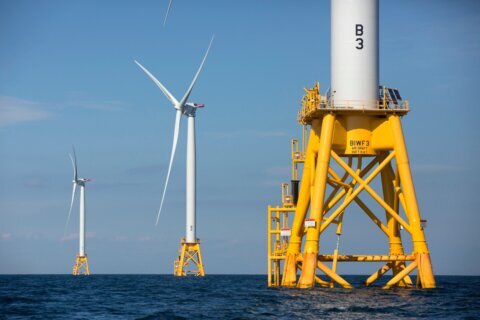This article was republished with permission from WTOP’s news partner InsideNoVa.com. Sign up for InsideNoVa.com’s free email subscription today.
This article was written by WTOP’s news partner InsideNoVa.com and republished with permission. Sign up for InsideNoVa.com’s free email subscription today.
Even as Washington Dulles International Airport continues to dig out of the COVID-infused air-traffic cliff-dive of 2020, Ronald Reagan Washington National Airport continues to lag considerably.
With 340,116 passengers passing through its terminals in January, Reagan National’s passenger count was down 81 percent from January 2020, according to new figures from the Metropolitan Washington Airports Authority.
By contrast, Dulles saw a not robust but better passenger total of 627,956 for the month, down 64 percent from a year ago.
January normally proves one of the slowest months of the year for local air travel, although figures would have been higher this year had there been traditional inauguration festivities. And January’s figures are definitely a lagging indicator; in the two months since, air travel on the domestic-tourism side has improved significantly across the nation, based on passenger counts provided by the Transportation Security Administration.
But Reagan National will have challenges even taking that rebound into account, as it is not a “hub” airport where passengers connect, and because there is, for now, little reason for tourists to come to the Washington area.
Dulles, by contrast, benefits by being a transit point for connecting passengers using dominant United Airlines, which in January was off just 58 percent from a year before in terms of domestic traffic – not great, but improving.
At Reagan National, by contrast, passenger totals reported by dominant American Airlines were off 82 percent.
On the international front, United’s passenger totals at Dulles were off 70 percent, with Avianca down 65 percent, Lufthansa off 78 percent, British Airways and Air France each down 85 percent, Korean Air down 86 percent and Air China out of the game entirely, having suspended service at the start of the pandemic.
Two international carriers with smaller dropoffs: Turkish was down 47 percent year-over-year, and Ethiopian was down just 38 percent.
At Dulles, the January market share of United was up to 73 percent, an 8-point jump from a year before, while at National, American’s market share of 49 percent was down 3 points from a year ago.
At Baltimore-Washington International Thurgood Marshall Airport, operated by the Maryland state government and focused more on low-cost leisure travel, the passenger count of just under 790,000 for January was down 59 percent from a year before. Southwest Airlines flew 542,000 of those passengers, a market share of 70 percent.







